Wild, Wonderful West Virginia: Our 7 Day Road Trip Through the Mountain State
This post may contain affiliate links.
Welcome to wild, wonderful West Virginia! This remote Appalachian state is known for its ridged mountains and valleys, scenic rivers, and stunning rock formations. We did a 7-day road trip through the eastern part of the state and were completely swept away by its natural beauty. After seeing it firsthand, we now know exactly what John Denver was talking about. If you love the outdoors, West Virginia certainly is “almost heaven.”

Prior to our trip, we were traveling through Oregon when we were contacted by Travel Mindset. They were working on a campaign with the West Virginia tourism board and wanted to know if we were interested in covering some of the outdoor recreation in the state. Neither one of us had been there before, so we were having difficulty picturing the landscape in our minds. (For some reason we kept thinking of industrial coal mining.) Nevertheless, in the spirit of saying “yes” to life as it throws opportunities our way, we signed up. We haven’t visited a state yet that we haven’t appreciated. So off we went.
While we did a little bit of planning before arriving in West Virginia, it was actually a chance meeting with a local that set the agenda for the rest of the trip. Sitting at Black Sheep Burrito & Brews in Charleston, we struck up a conversation with a man named Dean, who used to live in San Francisco before relocating to West Virginia ten years ago. When we casually asked him if there was much to do outdoors here, he nearly fell out of his seat. Apparently, we had stumbled into an outdoor recreation mecca of the East and hadn’t even known it.
“World class whitewater, downhill mountain biking, tens of thousands of miles of incredible hiking, and some of the most spectacular rock formations on the planet.”
As Dean rattled off must-see places and activities, we quickly jotted down notes on a napkin. We had a rough itinerary already planned, but after talking with Dean, we basically scrapped it and just did what he told us. And we are so happy we did. If you ever find yourself in this situation, always take the advice of a local over whatever you find on Google.
We spent the next seven days traveling through the state and exploring all the amazing outdoor recreation it has to offer. While West Virginia wasn’t high on our travel bucket list before this assignment, we would happily go back there in a heartbeat.
Best Time to Go to West Virginia
Summer – Much of West Virginia has a subtropical climate, which means the summers there can be hot and sticky. It is one of the best places to visit in August, which is when we visited. It was sunny for most of the time, but occasionally a thunderstorm would roll through and break the heat. Due to the state’s mountainous terrain, there’s an increased risk of flooding in early summer, but towards the end of the summer, the rivers have mostly normalized. While fall is a more popular time to visit West Virginia, prices are generally higher and it will be more difficult to book hotels, campsites, and tours.
Fall – Everyone we spoke with said that fall is West Virginia’s busiest season. The temperature dips, the humidity breaks, and the leaves begin to turn all sorts of magnificent colors. Many of West Virginia’s biggest outdoor festivals are held during early to mid fall, including Snowshoe Freefall mountain bike festival and Gauley Fest whitewater rafting festival. Since this is peak season, hotels, campsites, and tours will be at full capacity and prices will generally be higher.
Getting to West Virginia
West Virginia is enigmatic in that it’s close to a lot of populous states, yet it feels distantly remote. Thankfully, depending on where you’re coming from, you have a couple of options.
Driving: If you’re anywhere in the mid-Atlantic states, Ohio River Valley, or Kentucky / Tennessee area, then you might want to consider taking a road trip up. Charleston, WV is about a 5 hour drive from Washington DC, Indianapolis, or Nashville.
Flying: Charleston, WV has a small airport with a few nonstop regional flights to Chicago, Houston, Washington DC, Philadelphia, and Atlanta. You can see the full map here. If you’re flying in from out west, you may want to connect through one of those cities or pick up a car in Washington DC and drive into the state.
Day by Day Itinerary
West Virginia has a lot to explore and we were on a timeline, so, unfortunately, we couldn’t make it to everything we wanted to see. While we always wish we had more time, if you only have a week than this itinerary should give you a pretty good impression of the state.
Day 1 – Charleston
Not only is Charleston is a great basecamp to explore the rest of West Virginia (all of the places we visited are less than 3 hours from here), but it is also a worthwhile destination on its own. Located along the Kanawha River, the city has a quaint downtown with a variety of up-and-coming shops and restaurants. While we stopped by a bunch of places during our stay here, these were our favorites:
Black Sheep Burrito & Brew – DO NOT MISS THIS PLACE. It’s an absolute gem. They serve the most delicious and innovative burritos and tacos we’ve ever tried (order their cashew wasabi ahi tuna taco! We’re still drooling over it.) They also have an impressive selection of craft beer, provided by the conjoined Charleston Brewing Company. If you appreciate a solid West-Coast IPA, order a pint of The Raj.
Taylor Books – A charming book store attached to an equally charming coffee shop, we stopped by here to do a little route planning before we had to leave Charleston. At this point, we were piecing together the suggestions Dean had given us the night before (which included Taylor Books), but we could have easily picked up a guide book here as well.
Day 2 – Summersville
On our second day, we drove out to Summersville Lake and camped at Battle Run Campground. On our way out we took the scenic route, which offered us our first glimpse of the rural life of the countryside.
Cathedral Falls – On our way out to Summersville, we just had to stop at this gorgeous waterfall. About a mile away from the Gauley River Bridge, along route 60, these majestic falls cascade down into a natural rock amphitheater. While they’re visible from the nearby gravel parking lot, in order to experience them in their full glory, we recommend taking a short walk up to their base.
Long Point Trail – Summerville Lake is surrounded by sheer cliffs that rise up dramatically from the water’s edge. The most prominent edge is at the end of a narrow peninsula that juts out into the middle of the lake called Long Point. The trail is about a 4 miles round trip and the point is a great place to catch the sunset if you’re up for a little night hiking afterward (bring your headlamp or a flashlight – there are lots of roots in the trail you’ll want to be able to navigate around).

Day 3 – Fayetteville
About 20 minutes south of Summersville is the historic town of Fayetteville. What this small town lacks in size it makes up for in charm. It’s also the hub for a lot of the rafting outfitters that operate on the New River and Gauley River.
Rafting with Adventures on the Gorge – The first – and most emphatic – suggestion Dean gave us was to go whitewater rafting. Between the Gauley River and the New River, there’s world-class whitewater just an hour outside of Charleston. Around the town of Fayetteville, there are a variety of rafting outfitters to choose from, but we opted to go with Adventures on the Gorge. This summer camp inspired resort has recently united a bunch of smaller tour operators, allowing them to offer dozens of activities like rafting, zip lining, ATVing, climbing, rope courses, paintballing, and a lot more, all from one central location. We could have spent the entire week there without getting bored.
For our rafting trip, we did a half-day tour down the New River that covered class II-V rapids. According to our guide, this section of the river was tame compared to the Gauley River, but it was plenty wild for us. We had some big drops, took some heavy hits, and even did a little standing wave surfing with the raft. Thankfully the water was relatively warm because we were drenched from start to finish, but we loved every minute of it.
Pies & Pints – We stopped here for a late-lunch after our half-day rafting trip and it was amazing. They had a great selection of artisanal pizzas and lots of local craft beers on tap. They have three main sitting areas: inside, an enclosed breezeway, and covered outdoor patio. It was a beautiful day, so we made the obvious choice and parked it on the patio.
Kool Beanz – After we loaded up on pizza and beer at Pies & Pints, we suddenly began to feel sleepy (I wonder why?) so we walked next door to Kool Beanz for a little pick me up. While we got our coffee to go, there looked to be ample space to sit down, relax, and perhaps get a little work done.
Beauty Mountain Trail – This dramatic overlook of the New River Gorge was recommended to us by our river rafting guide. Here, rocky ledges poke out from the forest and offer spectacular views of the valley below. Since cell service is virtually non-existent in much of West Virginia, our guide drew us a map of how to get there on a back of a post card. It’s not really marked at all, but it will come up if you search for it on Google Maps.

Day 4 – Summersville to Snowshoe
We broke down camp at Summersville Lake and started driving north towards Snowshoe Mountain. Again, we opted to take the scenic way and made the drive part of the adventure. Along the way we stopped at the waterfalls of Hill Creek, Cranberry Glades, and the small town of Marlinton.
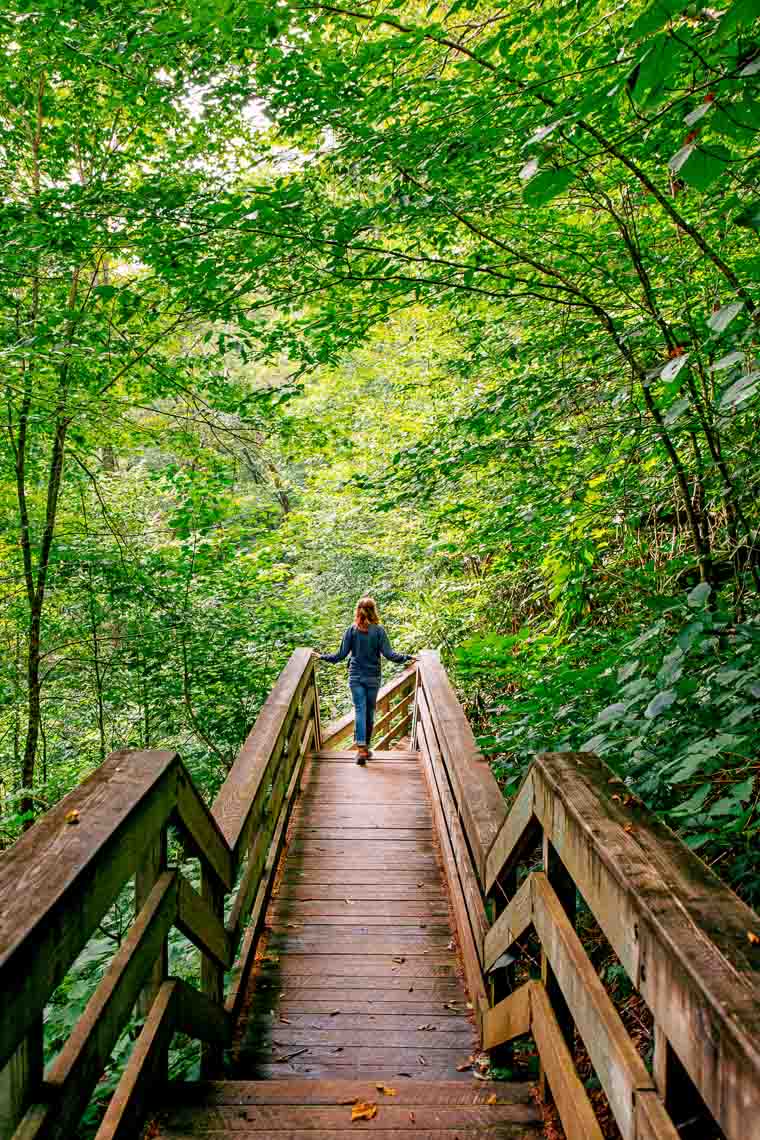 |
 |
Falls of Hill Creek – There are three different waterfalls here: Upper, Middle, and Lower Hill Creek Falls. While they all three spectacular in their own right, the lower falls has the special distinction of being the second highest in the entire state.
Cranberry Glades – A protected botanical area in the Monongahela National Forest, Cranberry Glades contains five boreal-style bogs. The soil is unusually acidic and supports vegetation that is usually found at much higher latitudes. Here you can spot cranberry bushes, sphagnum moss, and skunk cabbage as well as two different types of carnivorous plants.
Long wooden boardwalks have been constructed to allow you to venture deep into the glades without damaging the ecosystem and we spent the afternoon exploring the area. While the plant life was lush and green when we visited, we’ve seen photographs of it during the fall, and the entire field turns a deep crimson red. We will definitely have to come back later in the season to see that.
Dirtbean Cafe – We stopped in the sleepy yet quaint town of Marlinton for lunch. Without any cell service, we pretty much stumbled across Dirtbean Cafe while driving around and we’re so happy we did. This eclectic hole-in-the-wall was a cross between an organic cafe, bike shop, and a laid back coffee house. If you’re passing through this part of the world, you definitely should stop by.

Day 5 – Snowshoe Mountain
During the winter, Snowshoe Mountain is the southeast’s premiere ski destination, with crowds from the all over the south and D.C. area. During the summer, the downhill terrain transforms into a mountain biking paradise.
What’s interesting about Snowshoe Mountain is that the ski village is actually situated on top of the mountain. So all of your hotels, restaurants, and shops have spectacular views. It also means you never start your day with a line at the lifts. Just point yourself downhill and go.
Downhill Mountain Biking – We signed up for an half-day rental and introduction class at the Mountain Adventure Center. While we love city biking, neither of us had ever mountain biked before – downhill or freeride. As part of the package, we got hooked up with bikes, all the necessary protective like gear, helmets, gloves and most importantly: lift passes!
Our instructor Johanna was incredible and got us checked out on a mini-practice course before taking us out on some beginner trails. We’ve never had so much fun on a bike before. Rumbling over rocks, banking around corners, and splashing through mud puddles. It was a blast. We were just getting into the groove towards the end of our lesson, so we extended our rental for the rest of the day.
Foxfire Grill – We loved this place so much we ate here for lunch and for dinner. While Foxfire Grill offers the usual comfort foods you might from a ski resort restaurant, they really stand out in the condiment department. They offer a wide range of regional barbecue sauces, from Carolina to Lexington to Texas, that were out of this world. Doesn’t matter what you order here, just make sure you try some of the BBQ sauces with it!

Day 6 – Snowshoe to Circleville
After our stay at Snowshoe, we continued our way north to the small town of Circleville. While there isn’t anything particularly interesting in the town, just outside the town there are some of the most fascinating rock formations we’ve ever seen.
Ziplining at Nelson Rocks – When it’s too hot outside to go for a hike but you still want to explore the forest, zip lining is the only way to go. So we booked a half day trip with NRocks and got to experience the lush West Virginia forest with the wind whipping through our hair.
It’s hard not to have a great time while on a zip line. There’s something magical about flying through the trees, going from platform to platform. This course also had a few rope bridges we needed to cross and concluded with a 50 ft rappel back down to the ground.
Seneca Rocks – We had no idea that West Virginia was home to such spectacular rock formations. We’ve traveled all over the American West and we’ve never seen anything like Seneca Rocks.
It’s a jagged rock fin that bristles out of the surrounding tree-covered hillside like spiny ridges on the back of a stegosaurus. The towering cliffs are dramatic enough when viewed straight on, but when viewed from the side, where you can see just how remarkably thin the rock formation is, it’s almost hard to comprehend.
This is one of the most popular spots in the state for rock climbing and the small town nearby seems perfectly set up to support that culture. Seneca Rocks also has a variety of hiking trails so non-climbers to explore the rocks as well. There’s even an observation deck if you can make it to the top. But a word of warning – it’s steep!

Day 7 – Circleville to Dolly Sods
Via Ferrata at Nelson Rocks – The term Via Ferrata literally means “iron road” in Italian and is a style of protected rock climbing that is designed to allow people with absolutely zero climbing experience to scale towering cliffs. While this style of climbing has been popular for years in the Italian Alps, NRocks was one of the first operations to bring it to the United States.
Here’s how it works: oversized metal staples have been punched into the cliff, creating what looks like a giant metal ladder. Climbers wear a harness and clip into short sections of safety cables that run alongside the route. Climbers use two carabiners to attach themselves, so even when transferring to a new safety cable section, they are always attached.
Despite having a mild fear of heights, we signed up for this full day rock climbing experience and it completely blew our minds. In no time, we were scaling towering cliffs, passing over thousand-foot drops, and walking over an Indiana Jones style wooden bridge. Being able to get into those rock formations and see them from the top down, was an experience we will never forget.
Remember Dean from the bar? He told us we couldn’t leave West Virginia without doing this. And if you’re planning a trip to West Virginia, we are now obliged to say the same to you. Do it! It’s so totally worth it!
Bear Rocks in the Dolly Sods – With stunning vistas and unique localized ecology, the Dolly Sods Wilderness area is one West Virginia’s most precious hidden gems. This sprawling meadow contains alpine features like stunted trees, wind-carved boulders, heath barrens, and large peat bogs. Unlike the rest of the deciduous forest seen in the state, the Dolly Sods more closely resemble the type of dramatic landscape often found in the high sierras.
Dozens of trails crisscross the nearly 30 square mile area. While the land is open to hikers, overnight backpackers, and horseback riders, there are no mechanized vehicles (including bicycles) allowed inside. Since it has been designated as wilderness area, this is done to keep the environment as untouched and wild as possible.
Towards the eastern side of the Sods, at the northern end of Forest Route 75, we spent some time exploring Bear Rocks. These windswept cliffs look to the east and would have been a spectacular place to catch the sunrise. But that will have to wait until we come back next time!

#GOTOWV
Our time in West Virginia was absolutely incredible. The state has so much to offer and we barely scratched the surface of it. But what really sticks out to was how easy it was access everything. There was no traffic, no hefty entry fees, no busy parking lots, no crowded trails, and no overbooked tours. We booked most of our activities the day before, we rolled into a campground on a Saturday and there were spots. And unlike some of the more popular outdoor destinations out West, there seemed to be enough natural beauty here to go around without people trampling over one another.
If you’re looking for outdoor adventure, West Virginia should absolutely be on the top of your bucket list. It’s one of the best kept secrets in the East and well worth a trip out. We can’t wait to go back.



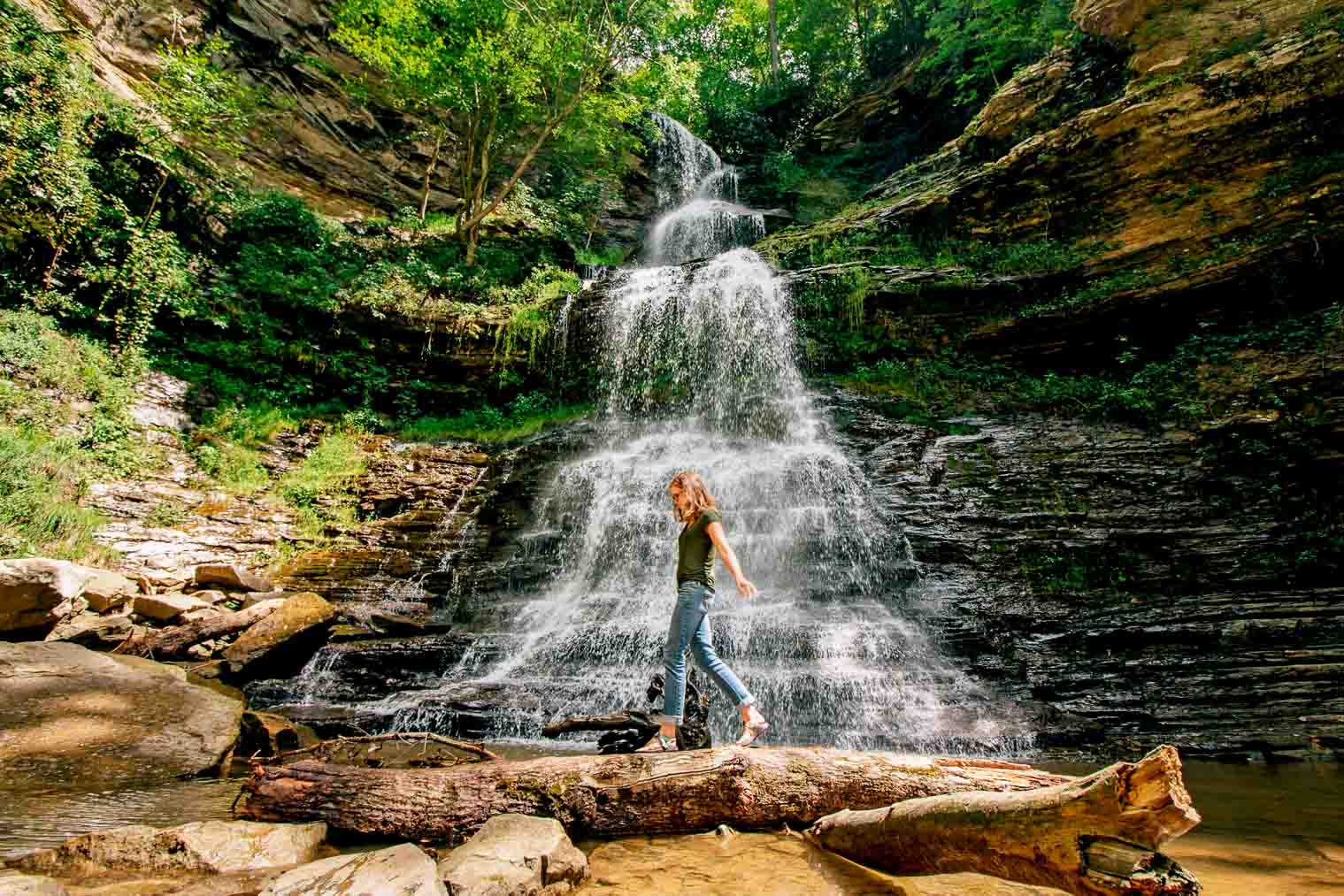





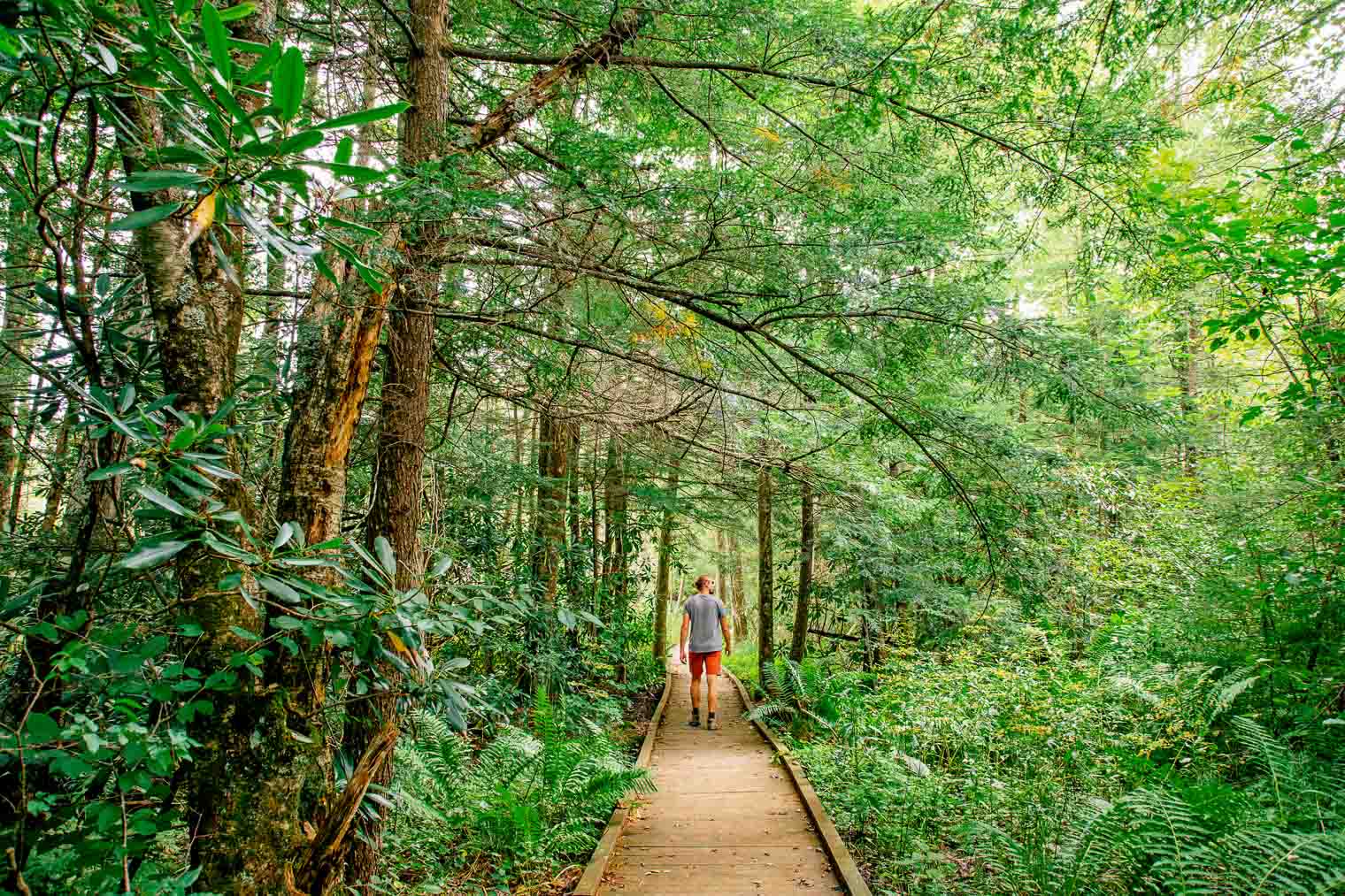

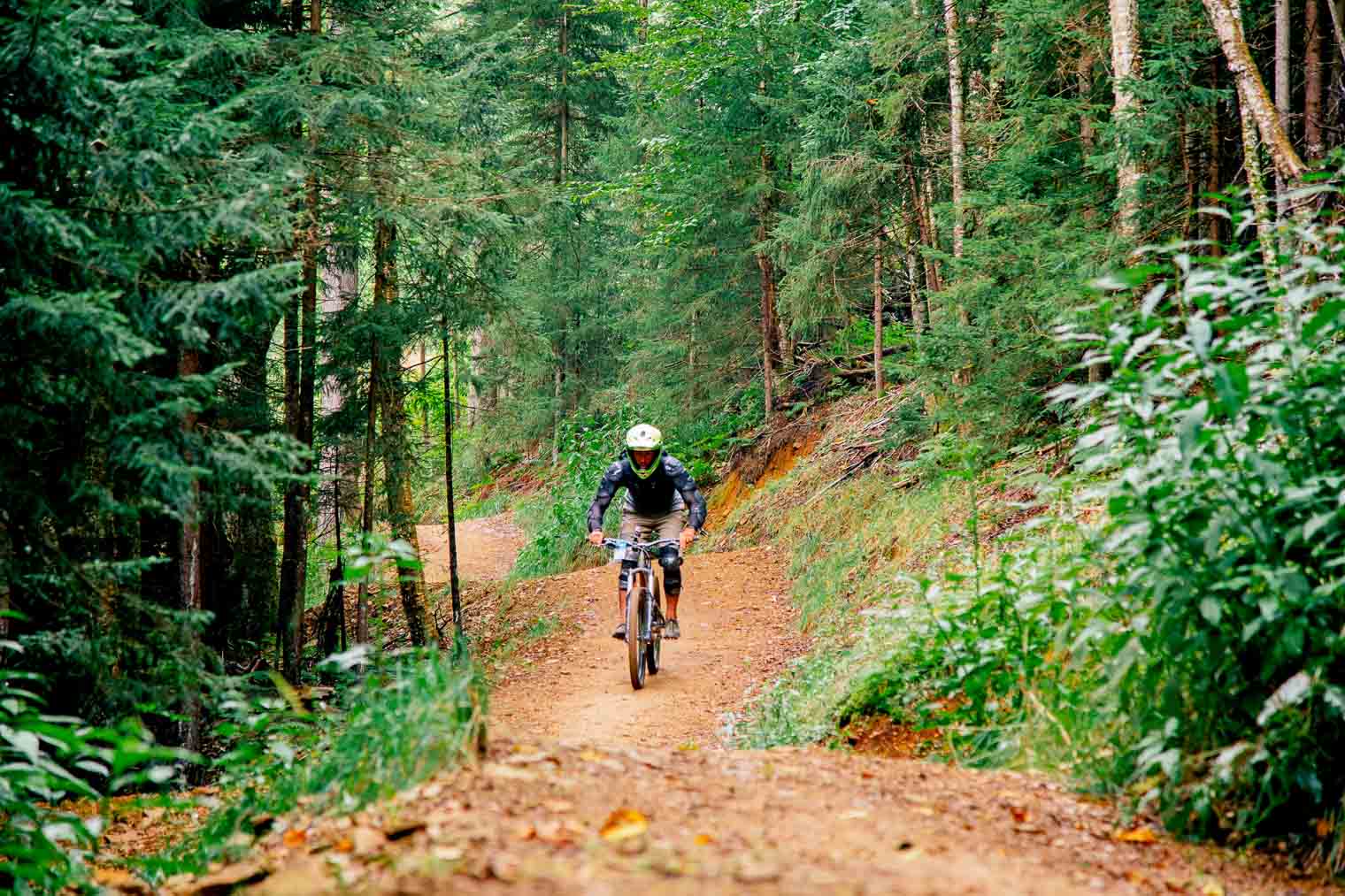
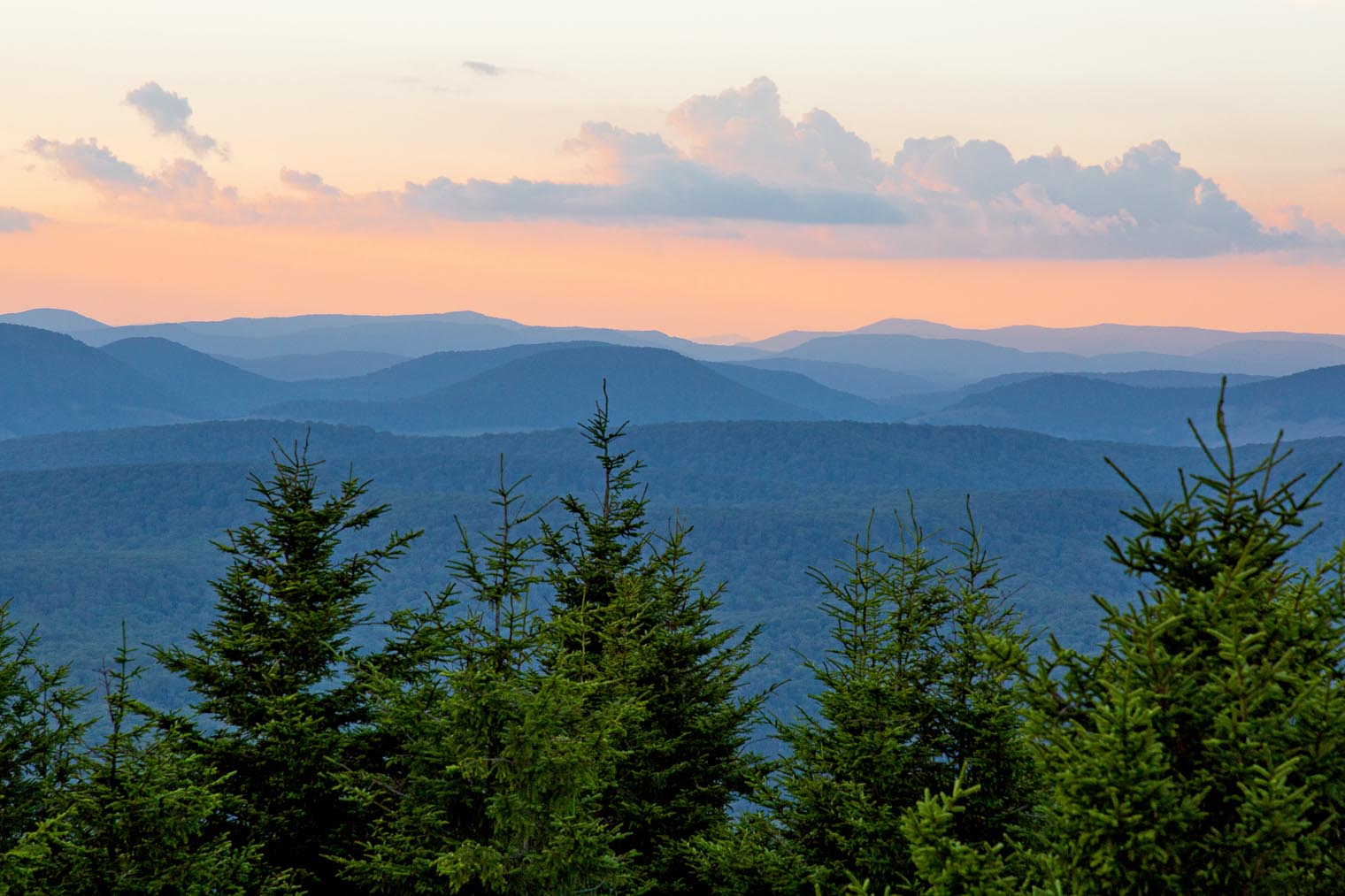



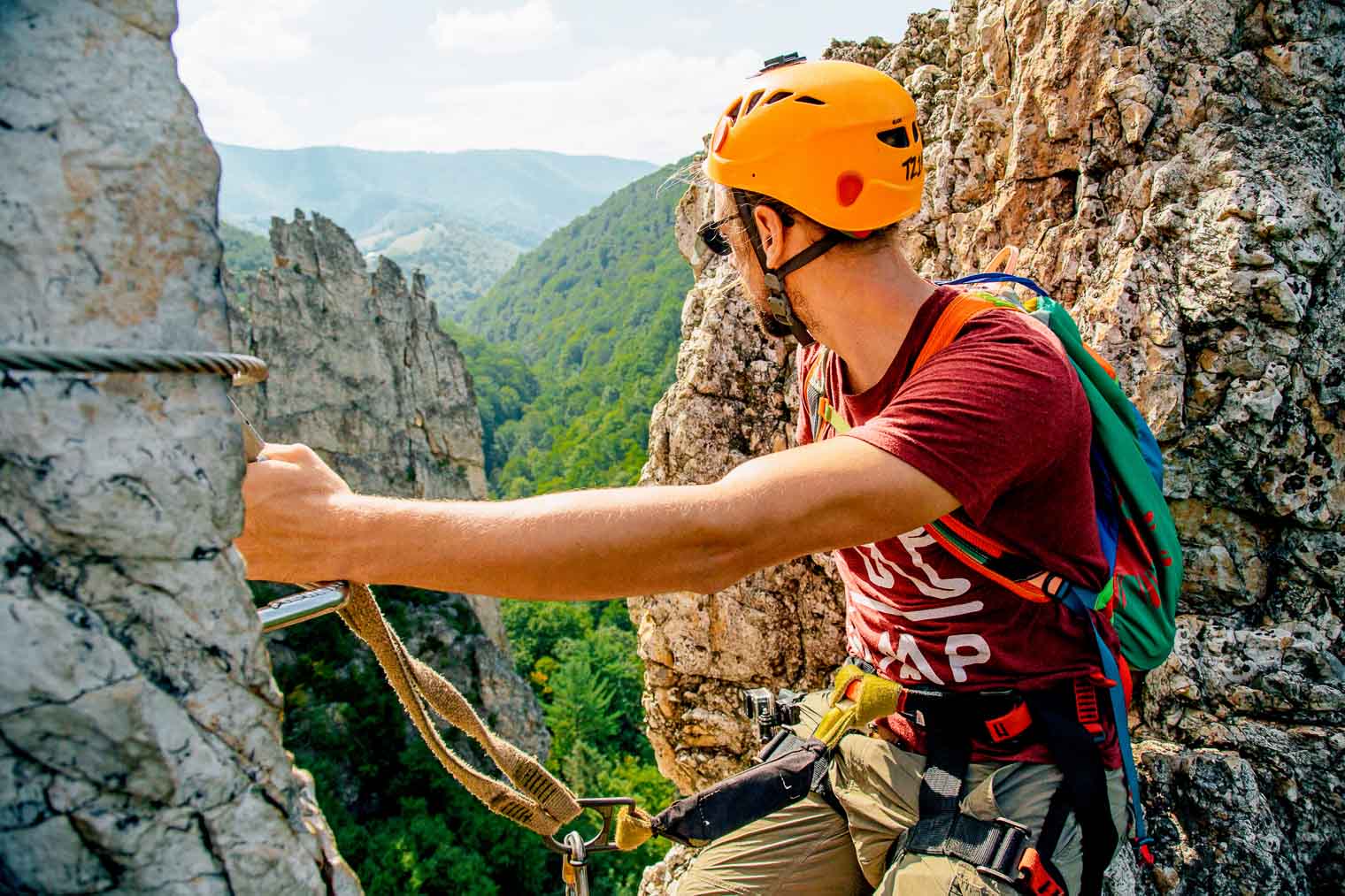
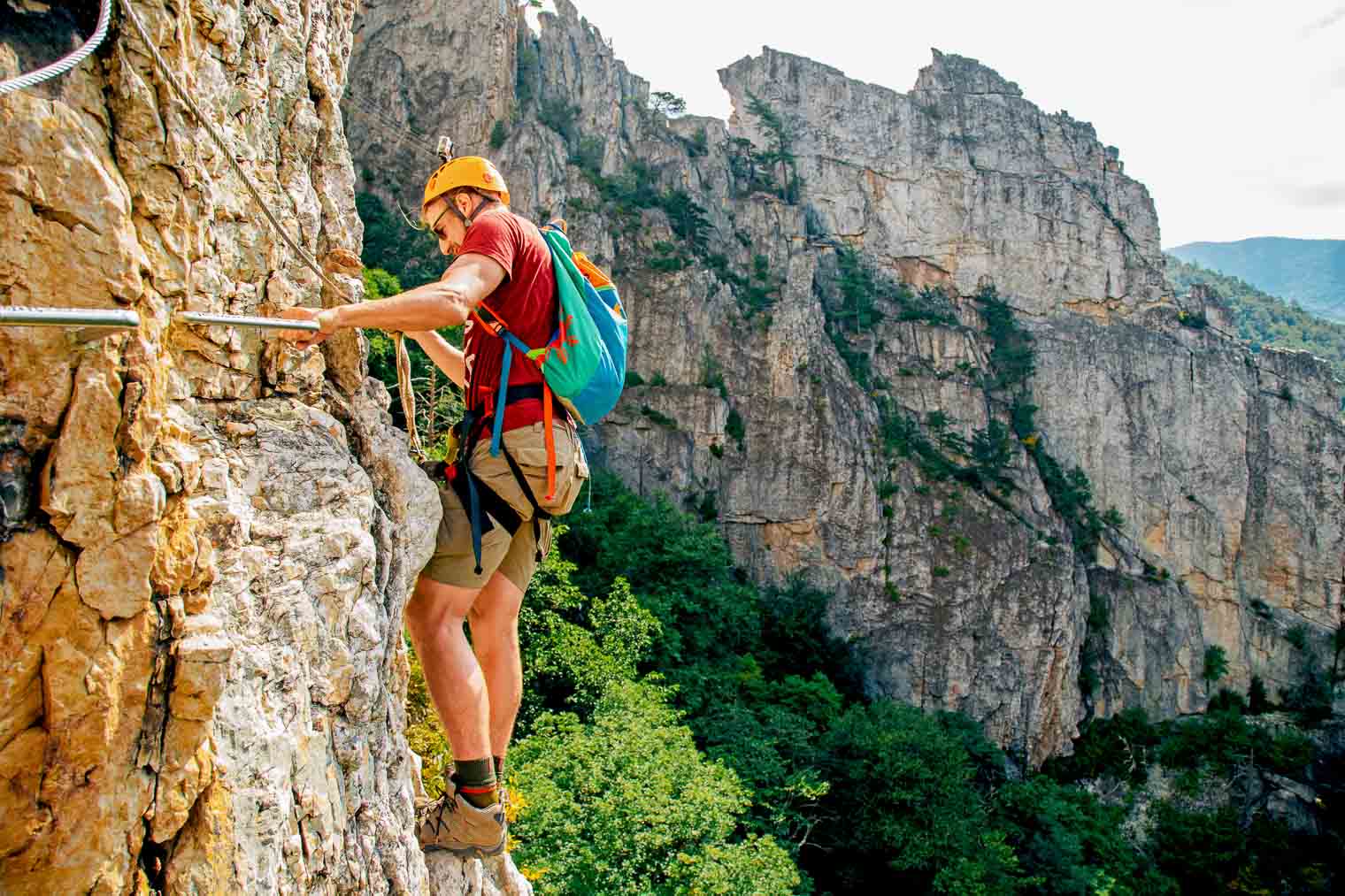



LOVE West Virginia! We considered Fayetteville as the place we were going to make our youngest baby and stop traveling…but there wasn’t a single house for rent. The locals must know they’ve got something special or when new folks want to move in, they’ve got to be really dedicated.
Thomas and Davis, WV are gems, too, especially Thomas. So many cool traveling folks, musicians, and plenty of trails out that way.
We really loved Fayetteville, too, and had the same thoughts you did – maybe it would be a great place to set up a base camp in. Lots of outdoor rec nearby, reasonable driving distance to a ton of other spots in the South/mid-Atlantic/East coast. It had such a great vibe; reminded us a lot of the great mountain towns out West that are blowing up – but much smaller (and more affordable) of course!
We really wanted to check out the Davis area and explore Blackwater Falls SP! Sounds like a cool community. Unfortunately the weather completely fell apart on us, so we headed further East instead. But, have a feeling we’ll be back at some point, so that part of the state is high on our list.
So awesome to see “other” states getting some love 🙂 We have driven through WV dozens of times and always love, love, love the scenery. LOVE your blog – thanks for writing it!
Thanks for reading, Maria!
West Virginia had some of the most amazing, lush scenery we’ve seen (PNW included!). I can’t tell you how many times we turned to each other and said, “It’s so GREEN!” Maybe we have spent too much in the brown and dusty West, but we were just awestruck.
Fantastic! Even I haven’t gone in that place yet but it seems I’ve been there because you have perfectly discuss your travel experience. Thank you for sharing it with the world.
Love west Virginia.I haven’t gone there yet but would love to go once. The way you describe your travel experience it’s amazing..Thank you for sharing.
It’s a state that is definitely worth the trip!
It just amazing place, went one but possibly next trip will be Virginia again.
I really loved your blog post. Feeling good to see that other states also getting some attraction.
I am a proud, born and raised West Virginian, and I really enjoyed reading about your experiences. I remember when I was growing up, my parents would often take family day trips all around the state to visit various state parks and scenic attractions…mainly because it was a cheap way to have a family vacation. It never bothered me a bit, and I always had an amazing time, absolutely loving every moment of our travels. There is so much spiritual and breath taking beauty in this state, it is a shame that many people tend to overlook it. I hope you guys get to make another trip back soon, and can experience WV in the fall and winter. The fall foliage in the mountains is absolutely awe inspiring…second to none. I highly suggest the north overlook and tunnel trail/turkey spur at Grandview (only a few minutes from Beckley), and Sandstone Falls, Lindy Point and Blackwater Falls area, Spruce Knob (highest elevation in WV) and Bear Rocks/Dolly Sods again in the fall…it looks like another planet with all the different colors..
are their any cabins we can rent near the lake
What lake are you talking about?
What about traveling the state for those that can not do hiking / biking/kyaking as we are in our 70’s with some leg and health issues but love historical, unique and scenic locations of all sorts. Wish to drive to WV is fall for7-9 days and see as much that the state has to offer as possible including Harpers Ferry Blackwater falls state park and Midland trail. All other suggestions or itineray plans would be welcomed.
For sure you want to travel on Route 39 east from Richwood towards Mill Point. You’ll pass the Falls of Hills Creek and Cranberry Glades, both worthwhile stops. Before reaching Raintown, at the Cranberry Visitor Center, turn north onto Route 150 which is the Highland Scenic Highway. It runs through totally undeveloped mountain wilderness for 28 miles. When you reach the end follow Route 219 North to Snowshoe and take the 7 mile drive to the top of Snowshoe Mountain. Go down the back side of Snowshoe Mountain (Route 9/3) to Cass and visit the railroad and the Greenbrier River there. That’a a solid day trip from Richwood. Great lodging options at Snowshoe.
I’m 55, I have lived in West Virginia my entire life, and I do not think I will ever touch the surface of experiencing what this great state has to offer both its residents, visitors and tourists. There is something here for everyone of every age, no matter the interest. The talent that lives among the hills here is unfathomable and neverending. And when you hear the term “almost heaven” you cannot truly believe it until you experience it and then you will understand. It’s an amazing place, and the people make you feel like you’ve been part of the family forever. I just do not think outsiders truly knows what we have to offer here.
We can not wait to get back to West Virginia. It completely blew us away. Every small corner of that state has got something interesting going on. Each valley, each river, a new discovery. We can’t wait to go back and spend some more time there.
Thank you for this great article on my home of West Virginia. As a trout fisherman I’ve traveled many of the roads and to many of the areas that you described. You obviously covered a lot of this beautiful state but I do wish you had found time to add the Canaan Valley and the great mountain towns of Davis and Thomas. They have lots to offer.
Also, Green Bank is a spectacular sight set in the radio quiet zone and further north is the highest point in West Virginia, Spruce Knob. So much more to see.
We wish we had more time in the state! West Virginia just has so much to offer. Every valley, every river. There is just something magical. We can’t wait to go back and when we do, we’ll definitely hit up Canaan Valley and Green Bank.
Great info! Can you tell me what lake is featured in last picture ?
That was taken from Battle Run Campground along the bank of Summersville Lake.
Loved reading this! Im from WV (Now currently in Colorado)and camped multiple times in Dolly Sods and Seneca Rocks. My two favorite spots in WV, glad you got to enjoy them too! Now I’m going to try some of your delicious looking recipes for my adventures in Colorado!
We can’t wait to get back there! That trip is a really special memory for us that we would really like to revist.